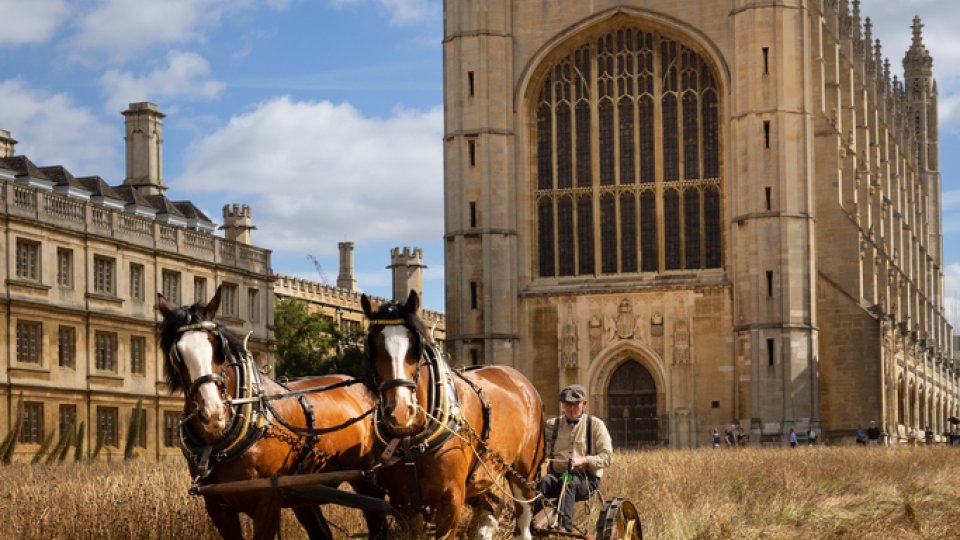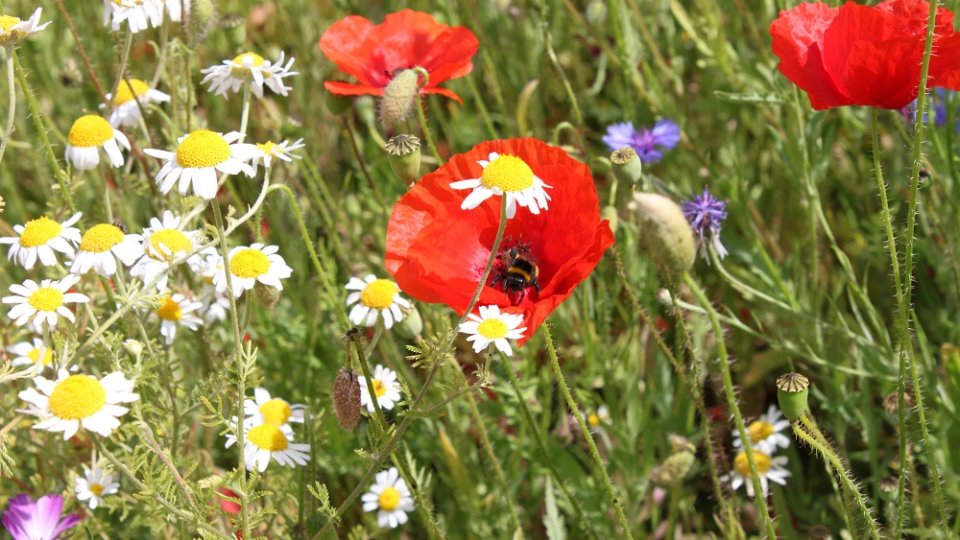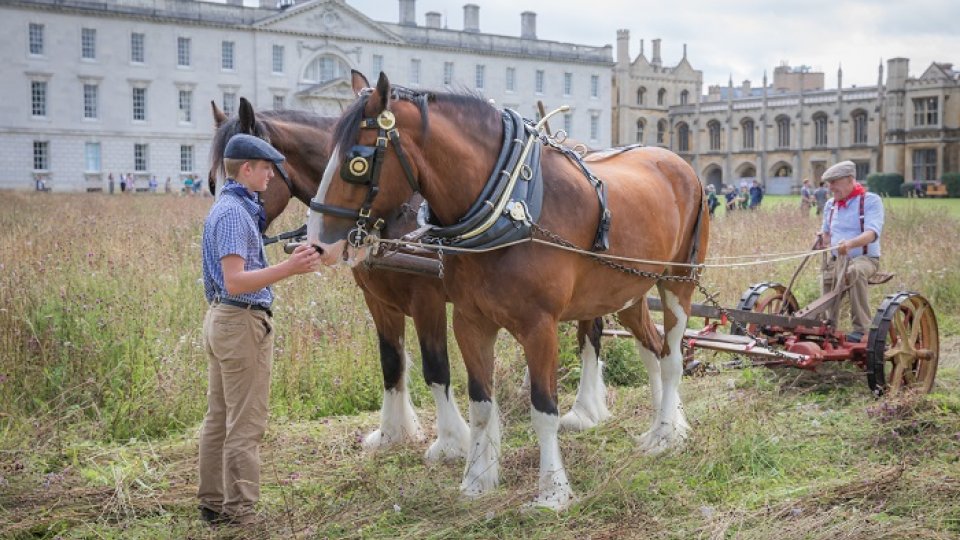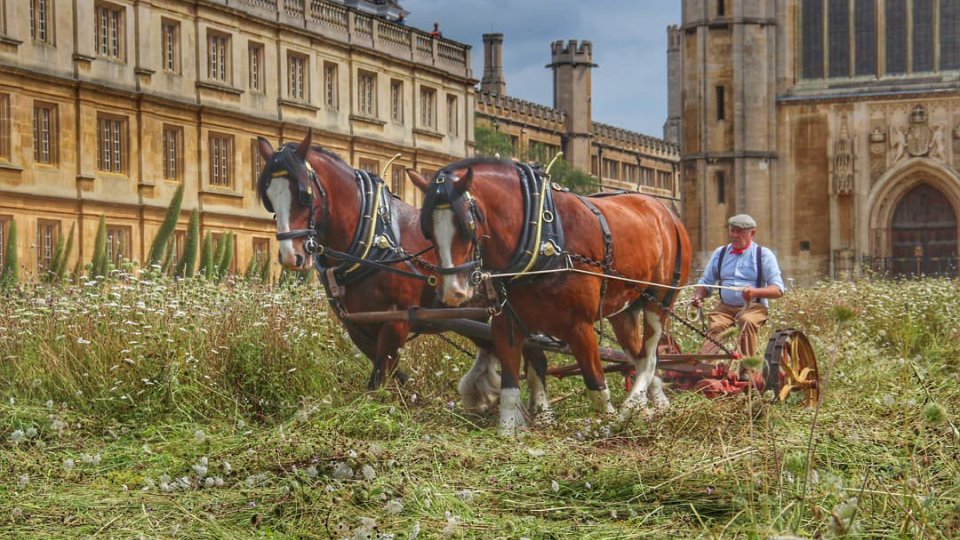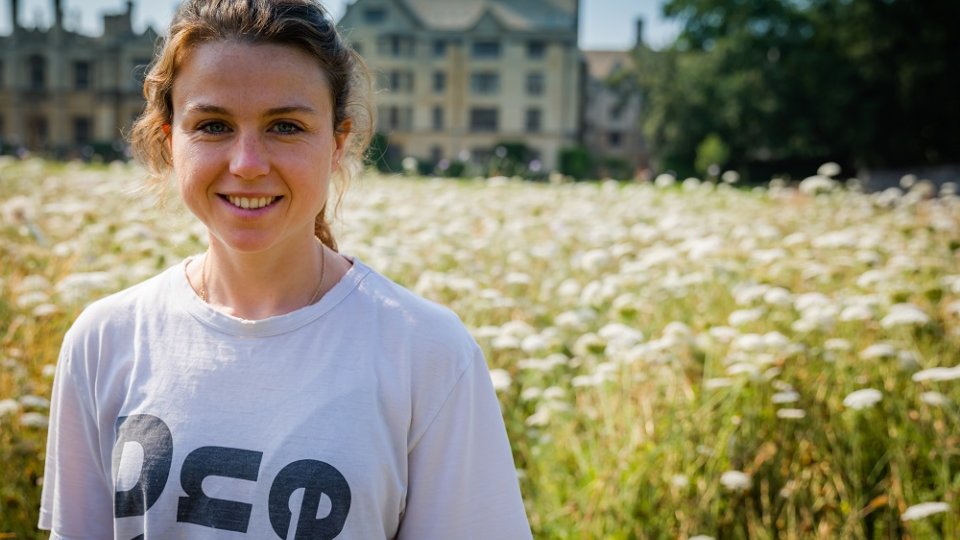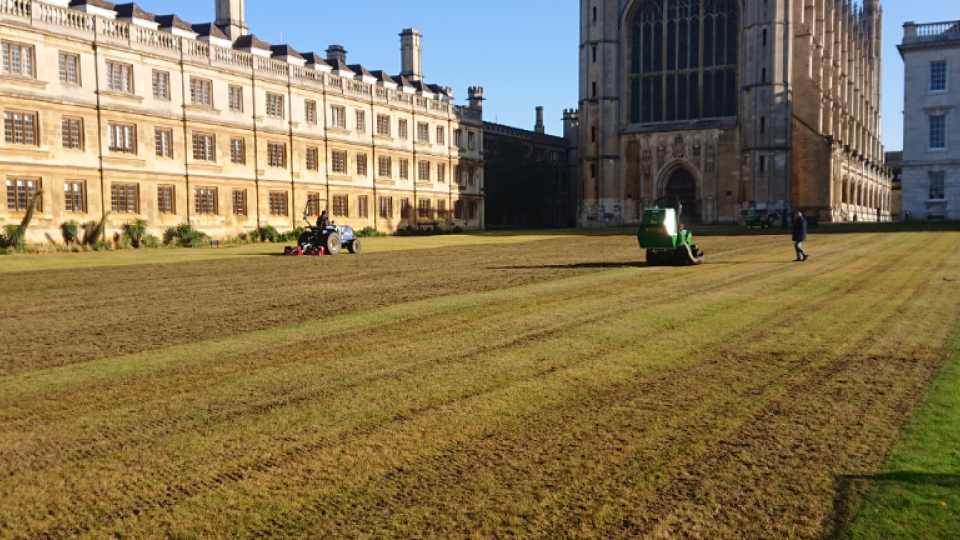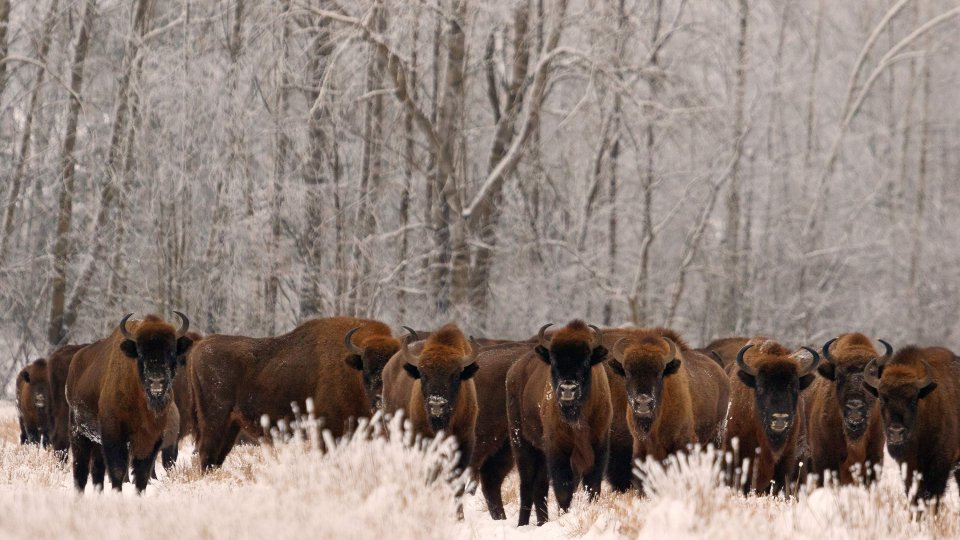
Biodiversity surveying in the wildlflower meadow got underway in mid-July, with Junior Research Fellow Cicely Marshall and Matt Wilkinson joined by Lynn Dicks and Steve Rogers of the Zoology department. Lynn identified 13 species of pollinators over two hours of recording, including species of bumble bees, solitary bees, beetles, hoverflies and a meadow brown butterfly. Her highlight was the Lasioglossum smeathmanellum, a beautiful metallic green furrow bee reported to be declining nationally, most likely nesting in the King's/Clare wall.
Matt and Steve brought their sweep nets and retrieved 13 species of invertebrates per transect in the meadow, and 46 in total, including four spider species, eight beetles, nine flies, 13 true bugs, nine Hymenoptera (wasps, bees, ants) and a thrip or two. Identification remains ongoing, but so far the meadow seems to support the richer invertebrate community we were hoping for.
Using a moth trap borrowed from the Zoology department, Matt caught a lacewing, some caddisflies and ladybirds, various species of moths and lots of just-emerged mayflies which proved a great treat to the house martins.
59 plant species were recorded in the meadow, compared with 22 plant species in the remaining lawn. The perennial meadow species, including kidney vetch, sorrel, and oxeye daisies, are establishing well underneath the annuals, and we recorded a fair number of plants which had found their own way into the sward. In August, Cicely was joined by Jonathan Shanklin and Monica Frisch of the Botanical Society of Britain & Ireland. Her highlights were Iberis amara, wild candytuft, a nationally scarce and declining species of open grassland sites, and Euphrasia confusa (little kneeling eyebright, identified by Jonathan Shanklin), a species not previously recorded from the county.
